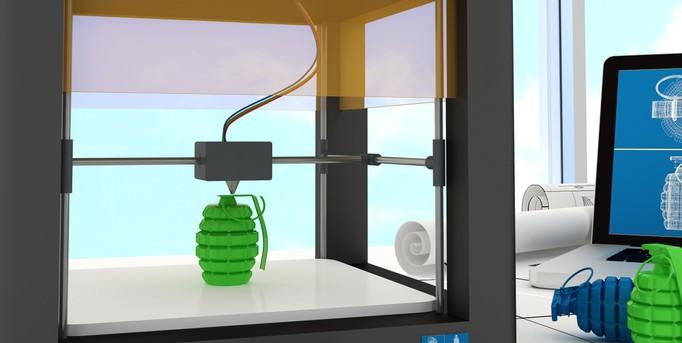- FMA
- The Fabricator
- FABTECH
- Canadian Metalworking
Our Publications
Categories
- Additive Manufacturing
- Aluminum Welding
- Arc Welding
- Assembly and Joining
- Automation and Robotics
- Bending and Forming
- Consumables
- Cutting and Weld Prep
- Electric Vehicles
- En Español
- Finishing
- Hydroforming
- Laser Cutting
- Laser Welding
- Machining
- Manufacturing Software
- Materials Handling
- Metals/Materials
- Oxyfuel Cutting
- Plasma Cutting
- Power Tools
- Punching and Other Holemaking
- Roll Forming
- Safety
- Sawing
- Shearing
- Shop Management
- Testing and Measuring
- Tube and Pipe Fabrication
- Tube and Pipe Production
- Waterjet Cutting
Industry Directory
Webcasts
Podcasts
FAB 40
Advertise
Subscribe
Account Login
Search
‘Logic bombs’ pose threat to drones, protheses, and other 4D-printed objects
- December 6, 2021
- News Release
- Additive Manufacturing
Cybersecurity researchers at Rutgers University-New Brunswick and the Georgia Institute of Technology have proposed new ways to protect 4D-printed objects like drones, prostheses, and medical devices from malicious embedded computer code called “logic bombs.”
“Next-generation, cyber-physical additive manufacturing enables advanced product designs and capabilities, but it increasingly relies on highly networked industrial control systems that present opportunities for cyberattacks,” said principal research investigator Saman Zonouz, quoted in an article about the research posted to the Rutgers website.
Zonouz, an associate professor of electrical and computer engineering at the New Jersey university, added, “The predominant approach to defending against these threats relies on host-based intrusion detectors that sit within the same target controllers and, hence, are often the first target of the controller attacks.”
The researchers looked at Mystique, a novel class of attacks on printed objects that leverage emerging 4D printing technology. Mystique enables visually harmless objects to behave maliciously when a logic bomb is triggered by a stimulus such as a change in temperature, moisture, or pH level, or when the part material is modified prior to printing. Such changes can lead to catastrophic operational failure.
The researchers proposed two strategies to prevent these attacks. The first focuses on designing a sensor that can measure the composition and diameter of raw materials passing through a 3D printer’s extruder to ensure the material meets expectations before the object is printed. A dielectric sensor can detect a change of 0.1 mm in a filament’s diameter and a change of 10% in concentration composition.
The second solution is to use high-resolution CT (computed-tomography) images to detect residual stresses in printed objects that contrast benign and malicious designs before activation of an attack. CT detection has an accuracy of 94.6% in identifying 4D attacks in a single printing layer.
The research team plans to provide guidelines to tie together resilience solutions pertaining to software security, control system design, and signal processing and incorporate reliable and practical cyber-physical attack detection into real-world manufacturing environments.
The National Science Foundation funded the Rutgers-Georgia Tech research.
- Podcasting
- Podcast:
- The Fabricator Podcast
- Published:
- 04/16/2024
- Running Time:
- 63:29
In this episode of The Fabricator Podcast, Caleb Chamberlain, co-founder and CEO of OSH Cut, discusses his company’s...
- Trending Articles
- Industry Events
16th Annual Safety Conference
- April 30 - May 1, 2024
- Elgin,
Pipe and Tube Conference
- May 21 - 22, 2024
- Omaha, NE
World-Class Roll Forming Workshop
- June 5 - 6, 2024
- Louisville, KY
Advanced Laser Application Workshop
- June 25 - 27, 2024
- Novi, MI

























